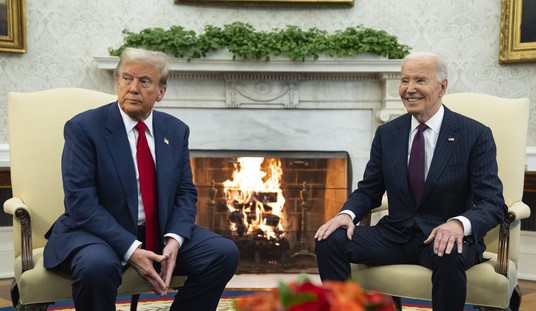Barack Obama and his campaign hoped to make ObamaCare their pitch to get younger voters more enthused about the election this year — a perverse but not forlorn hope, as I’ll explain in a minute. That may be even more true in North Carolina, where Democrats are holding their convention this week, and where Obama needs to generate the visible and noticeable excitement among college-age voters that was so apparent in 2008 and has been lacking in 2012. Peter Hamby at CNN reports why that may be a bigger problem for North Carolina college students in particular, as the costs of their mandated health insurance went up more than half after ObamaCare’s passage:
But as the president fights to keep the conservative-leaning state in his column this November, education officials here are complicating his campaign message by citing “Obamacare” as a reason for the rising cost of student health insurance plans on campuses from Asheville to Wilmington.
In April, Tom Ross, the president of the University of North Carolina system, sent a letter to the university’s board of governors announcing that students should brace for a hike in the cost of university-provided insurance plans.
Ross explained that at least 64,000 North Carolina college students – roughly a third of those enrolled in the state’s 17 public universities – should expect to see “substantial” increases in health coverage costs for the 2012-2013 academic year.
“Based on more than three semesters of actual claims experience, as well as the new provisions of the Affordable Care Act, we are facing large increases in premiums for our students,” Ross wrote in the letter.
The price per semester last year was $460. This year it will go up to $709. In part, this was caused by the claims experience of Chartis over the last couple of years, which discovered that students on this plan accessed care more often than they initially predicted. A significant part of the increase, however, comes from the requirements of comprehensive insurance coverage that will exacerbate those trends rather than limit cost increases.
That has been the issue for college insurance plans all around the country, not just in North Carolina. Two years ago, universities and colleges tried to get a blanket waiver from those coverage requirements, and suggested that they may have to dump coverage options altogether without those waivers:
Colleges and universities say that some rules in the new health law could keep them from offering low-cost, limited-benefit student insurance policies, and they’re seeking federal authority to continue offering them.
Their request drew immediate fire from critics, however, who say that student health plans should be held to the same standards that other insurance is.
Among other things, the colleges want clarification that they won’t have to offer the policies to non-students.
Without a number of changes, it may be impossible to continue to offer student health plans, says a letter that the American Council on Education sent Aug. 12 to Health and Human Services Secretary Kathleen Sebelius, signed by 12 other trade associations that represent colleges.
Additionally, the colleges say that some provisions of the law don’t apply to their policies, including those that require insurers to spend at least 80 percent of their revenue on medical care and that bar them from setting annual coverage caps.
Students might have cheered the efforts of the Obama administration to force colleges to provide more comprehensive coverage, but they won’t be cheering when they open the bill for those services. Most young adults won’t ever use $1400 of medical services in a year, let alone more than that. A routine wellness physical costs around 10-15% of that figure. They would be better off with a low-cost policy for hospitalization and paying for everything else out of pocket. The high cost of comprehensive policies for this demographic only serves to subsidize the cost of older clients so that they don’t get charged as much for the comprehensive policies that make more sense for them.
That’s why an ObamaCare strategy is a perverse effort to woo young adults. If students wanted a comprehensive-policy option, they could have gotten it without ObamaCare, and now students no longer have the more sensible low-cost option thanks to ObamaCare’s mandate. The only reason this strategy isn’t a forlorn hope is that college students haven’t realized so far just how badly ObamaCare exploits them to lower costs for the more politically reliable 40-54YO demographic, who really benefit most by forcing younger people to pay higher premiums. They may begin to understand it, though, as those health-insurance bills get delivered this month.








Join the conversation as a VIP Member